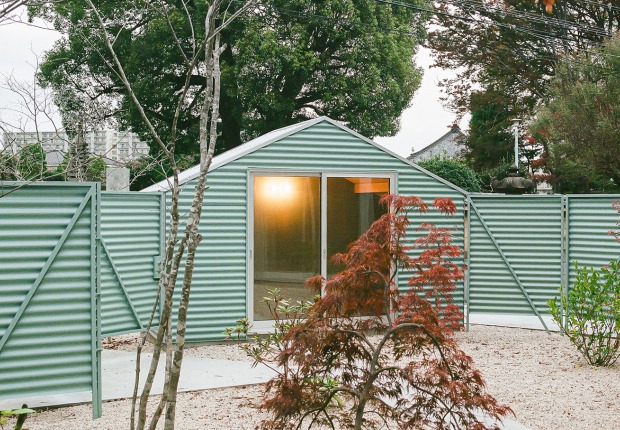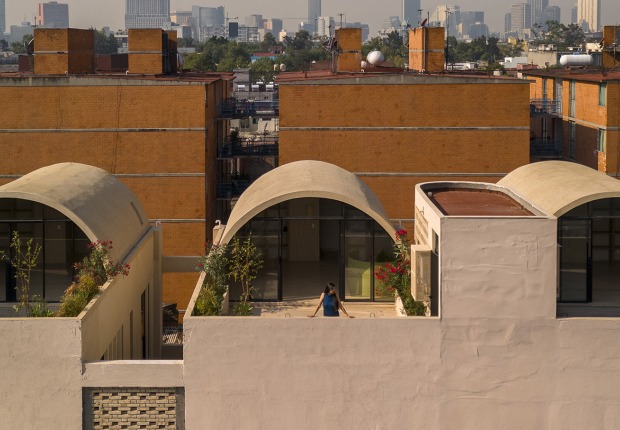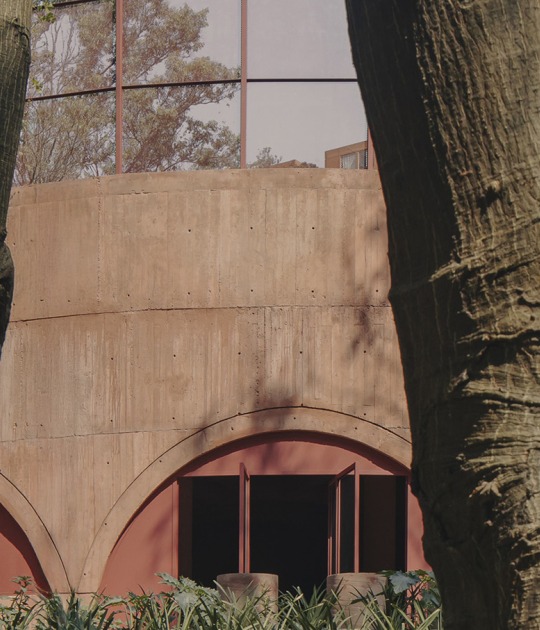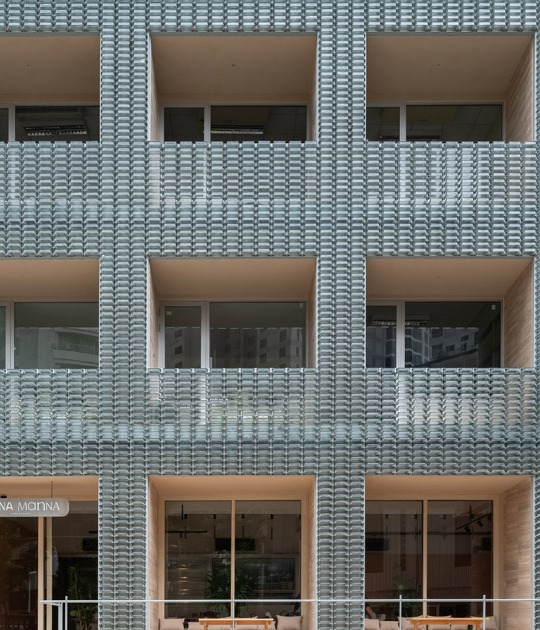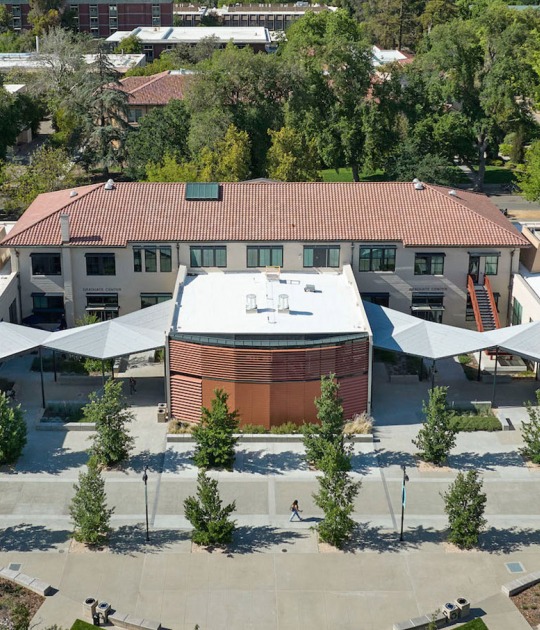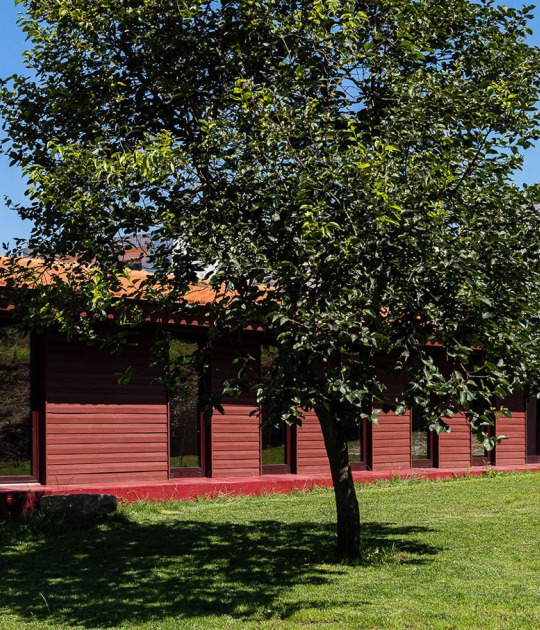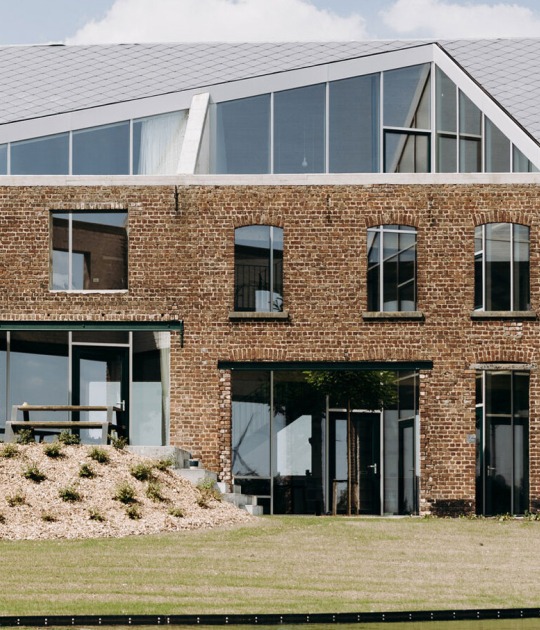
In the project by Donaire Milans Arquitectos, natural light, which enters from above, plays a central role, evenly bathing the central stone cube that dominates the main space. For the museographic design of the permanent collection, each intervention was used to enrich the visitor experience. Architecture and museography merge, generating paths filled with intersecting views, connections between different levels, reflections, and plays of perspective. An open and accessible museum that invites exploration and discovery.
The proposal is summarised in minimal and precise interventions that respect the original building and guarantee a functional and contemporary use. Within these parameters, one of the most representative elements of the project is the large LED screen installed at the beginning of the tour. This audiovisual device establishes a link between the living memory of the collection and current technological languages, based on a projected journey through the recent history of the performing arts in Spain. Narrative, performing arts, light, and technology combine, creating a new, respectful and functional space.

Renovation of the National Museum of Performing Arts by Donaire Milans Arquitectos. Photograph by Montse Zamorano.
Project description by Donaire Milans Arquitectos
The renovation of the Almagro National Theater Museum, the future National Museum of Performing Arts, has been an exercise in precision and respect for history; a subtle dialogue between past and present that seeks to enhance the building's essence with minimal resources and maximum impact. Located in the former Palace of the Masters by Calatrava, the museum, steeped in history, required an update that would improve its functionality without losing its identity and expand its exhibition capacity.
The renovation has reinterpreted the existing spaces from a contemporary perspective, redefining the access and circulation system to make them more intuitive, open, and accessible. Elements that limited the fluidity of the route have been removed, allowing natural light—which envelops the central stone cube through skylights—to regain its prominence and flow more freely through each room. The removal of the old staircase, relocated to the main communications core, has transformed the spatial perception, vertically amplifying the complex, giving it greater lightness and reinforcing the visual connection between levels.

The museographic project, conceived in parallel with the architectural intervention, has been sensitively adapted to the existing spaces, taking advantage of each modification to enrich the visitor experience. The new layout of display cases and artwork generates a wide range of intersecting perspectives, allowing the viewer to explore a museum full of dynamic visual experiences, with connections at different heights and between diverse areas. In this way, architecture and museography intertwine in a play of perspectives and reflections that complements and gives meaning to the architectural intervention.
One of the most representative elements of this new relationship between architecture and exhibition narrative is the large LED screen installed in front of the grandstand incorporated into the intervention, specifically designed to welcome visitors at the beginning of the tour. This audiovisual display projects the recent history of the performing arts in Spain, establishing a bridge between the living memory of the collection and contemporary technological languages.

Through precise decisions and a focus on minimalism, the museum's image has been updated, giving it a brighter and more serene atmosphere: a neutral setting where the museum's valuable collection, carefully selected by curator Ángel Martínez Roger, and the new graphics by Inés Atienza, take center stage. The use of noble materials and construction solutions that respect the original building have ensured the sustainability of the intervention, minimizing its impact and allowing for future updates to the museographic proposal.
The result is a more open, accessible, and inspiring museum; a renovated space that invites exploration and discovery, where the performing arts are not only narrated but also staged through space, light, and technology.





























